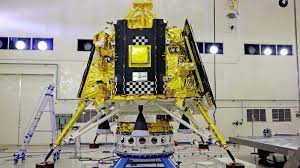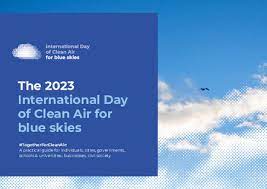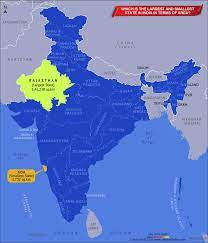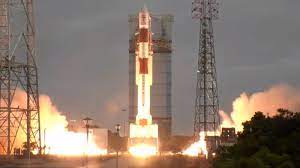
Chandrayaan-3: ISRO Completes Rocket Assembly, Final Tests Awaited for Launch– The Indian Space Research Organisation (ISRO) has finished assembling the Chandrayaan-3 rocket and is currently preparing for the final set of testing before the scheduled launch. The spacecraft has been fully integrated, including the indigenous lander module, propulsion module, and rover, and the payload faring has been accomplished. The launch is expected to take place between July 12 and July 19.
Here are the key points:
| Key Points | Explanation |
| Rocket assembly status | Completed, with final tests pending |
| Expected launch date range | July 12 to July 19 |
| Mission objectives | Develop and demonstrate technologies for interplanetary missions, analyze the lunar surface chemically, and perform experiments on the moon’s surface |
| Launch site | Satish Dhawan Space Centre, Sriharikota |
| Assembly location and preparations | UR Rao Satellite Centre (URSC) in Bangalore; assembly completed and sent to Sriharikota for launch |
| Chandrayaan programme background | Chandrayaan-1 launched in 2008 and successfully inserted into lunar orbit; Chandrayaan-2’s lander crash-landed on the moon’s surface in 2019 due to a software glitch |
Rocket Assembly Completed:
The assembly of the Chandrayaan-3 rocket has been finished, and only the final round of tests remains.
Final Tests and Launch Schedule:
Next week, the rocket will go through final testing before being relocated from the vehicle assembly building to the second launchpad. The debut date is believed to be July 13, between July 12 and July 19. ISRO Chairman S Somnath stated that an early launch within this timeframe is their goal.
Mission Objectives:
Chandrayaan-3 aims to develop and demonstrate new technologies required for interplanetary missions. The lander will possess the capability to softly land on a designated lunar site and deploy the rover, which will conduct in-situ chemical analysis of the lunar surface. Both the lander and the rover will carry scientific payloads to perform experiments on the moon.
Launch Site and Configuration:
Chandrayaan-3 will be launched from the Satish Dhawan Space Centre in Sriharikota. The propulsion module will carry the lander and rover configuration to a 100km lunar orbit.
Payload Assembly and Preparations:
The payload assembly procedure for Chandrayaan-3 began in May in order to meet the July launch schedule. The assembly was conducted at ISRO’s UR Rao Satellite Centre in Bangalore, followed by transportation to the Sriharikota space port for the launch.
Background on Chandrayaan Programme:
The Indian Space Research Organisation’s (ISRO) Chandrayaan programme is an Indian space exploration initiative. It focuses on lunar exploration and comprises a number of missions aiming at learning more about the Moon’s surface, composition, and origin.
Here are some key points about the Chandrayaan programme:
- Chandrayaan-1: The Chandrayaan-1 mission was launched on October 22, 2008. It was India’s first lunar mission and the first spacecraft to discover water molecules on the Moon’s surface. The mission also confirmed the presence of high amounts of helium-3, a potential fuel for future nuclear fusion.
- Chandrayaan-2: On July 22, 2019, India launched its second moon mission, Chandrayaan-2. It was made up of an orbiter, a Vikram lander, and a Pragyan rover. The objective of the mission was to further explore the Moon’s surface and attempt a soft landing near the lunar south pole. However, the lander lost communication with ground control and the mission was partially successful, but it still provided valuable data.
- Objectives: The Chandrayaan mission has various goals, including mapping the lunar surface, studying the Moon’s minerals and geology, analysing the lunar exosphere (thin atmosphere), and looking for water ice in the permanently shadowed parts of the Moon.





